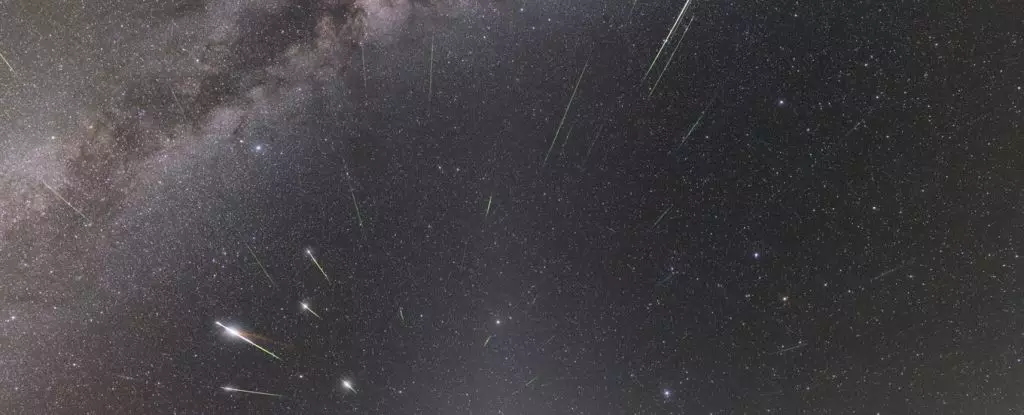As the seasons transition, the night sky unveils one of its most thrilling spectacles—the Eta Aquariid meteor shower. This annual cosmic event reaches its zenith from May 5 to 6, inviting stargazers and curious observers to witness a captivating dance of light as meteors streak across the sky. Over the southern hemisphere, this extraordinary display is poised to be particularly dazzling, showering the Earth with fragments from Halley’s Comet, which last graced our skies 76 years ago. This isn’t merely a celestial event; it’s an invitation to connect with the universe in a profound and awe-inspiring way.
The Science Behind the Shower
Meteors, often referred to as “shooting stars,” showcase an intricate interplay of science and beauty. The Eta Aquariids are the remnant particles shed from the debris trail of Comet 1P/Halley. As our planet orbits the Sun, it encounters these tiny cosmic remnants, which ignite as they enter the Earth’s atmosphere, resulting in glowing trails that dazzle the observer’s eye. These meteor showers occur annually, providing consistent opportunities for astronomical appreciation. The phenomenon not only highlights the wonders of space but also serves as a reminder of our planet’s dynamic relationship with celestial bodies.
Optimal Viewing Conditions: The Perfect Spot
To fully immerse yourself in this cosmic experience, finding an optimal viewing location is paramount. Ideal conditions include being situated in an area with minimal light pollution and a clear, unobstructed view of the night sky. As night falls, setting up a comfortable spot—perhaps with blankets and pillows—allows for a relaxing viewing experience as you wait for the meteoric display to unfold. The thrill of anticipation, combined with the tranquil atmosphere of the night, can be deeply rewarding. While the allure of the meteor shower may prompt some to rise early, the potential awe of witnessing a falling star makes every moment worthwhile.
What to Expect: The Numbers and the Glory
During its peak, the Eta Aquariid meteor shower boasts impressive numbers, especially for observers in the Southern Hemisphere. With an anticipated rate of 50 to 60 meteors per hour, the landscape will be illuminated by cosmic flashes. Northern Hemisphere viewers may behold around 30 meteors per hour, which is still a significant visual treat. Interestingly, the shower’s radiant location in the constellation Aquarius enriches the experience, enhancing the observer’s connection to the night sky. Regardless of your geographic location, this is an event that transcends borders—an opportunity to share an exhilarating experience with friends, family, or fellow enthusiasts.
Timing Is Everything: Plan Your Observations
The timing of your observation is crucial. The Moon’s phase, a significant factor for meteor visibility, will align favorably for the peak nights. Though it may be 64 percent full, the Moon will set early enough to allow for optimal viewing of the meteor shower’s radiant rise. Early dawn emerges as the ideal time to witness this natural wonder, and being informed can significantly enhance your experience. Websites like Time and Date offer tailored viewing conditions based on your location, ensuring you won’t miss out on this celestial showcase.
Extending the Experience: Showers Beyond the Peak
While the peak nights promise the most vibrant displays, the excitement doesn’t end on May 6. The Eta Aquariids will continue to grace our skies, with a diminishing spectacle extending until late May. This extended viewing period ensures that even if you miss the prime time, opportunities remain to enjoy an ephemeral moment of cosmic wonder. Additionally, for those who seek further engagement with celestial events, tracking tools and calendars, such as the International Meteor Organization’s meteor shower calendar, can help you stay connected with the universe throughout the entire year.
Embark on this celestial journey, revel in the cosmos, and allow the magic of the Eta Aquariid meteor shower to illuminate your horizon. The night sky is not just a backdrop; it is a canvas painted with the brilliance of the universe, urging us to pause, admire, and connect with the greater cosmos around us.


Leave a Reply